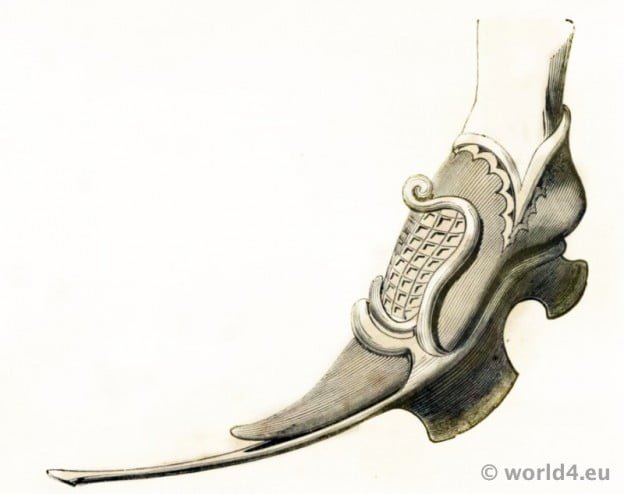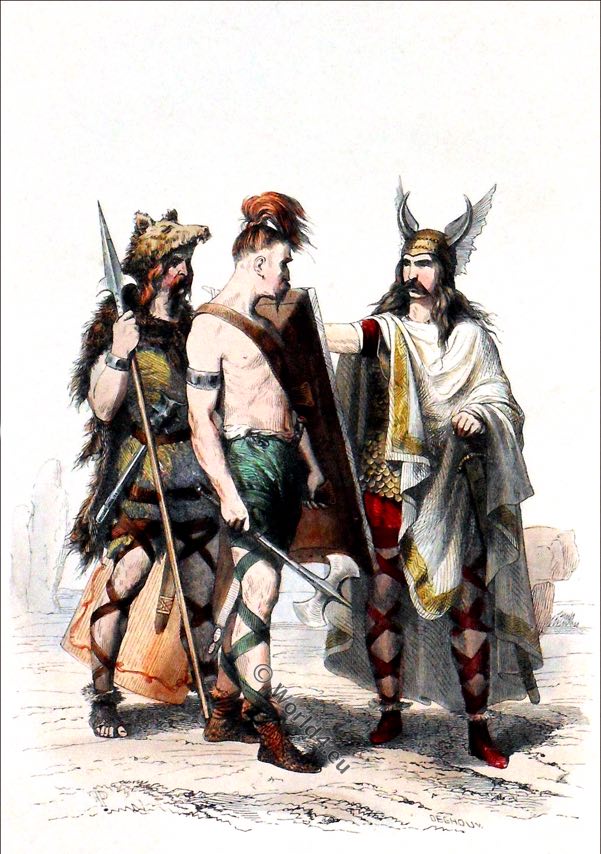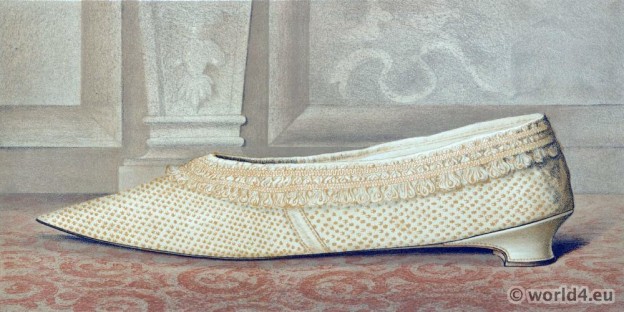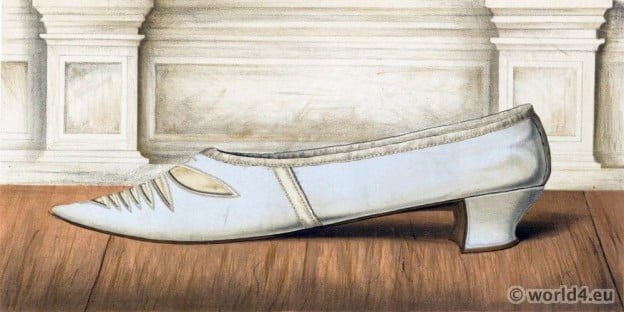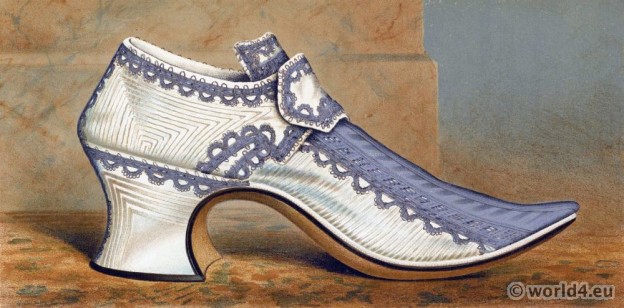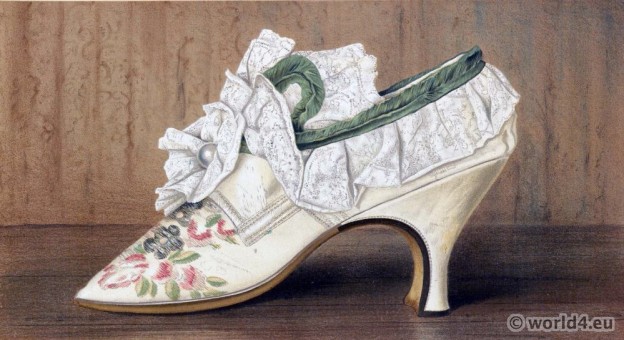History of shoemakers: preceded by the history. Beaked Shoe, of King John II. of France (Jean le Bon). 14th century.
Category: Nobility
Frankish Merovingian costume history 4th and 5th century.
The Nobility. State Costume — Men 6th, 7th and 8th Centuries. Goldsmiths’ Work. Costume of the Middle Classes Men. Lower Classes. The Glove. Costume of the Nobility Women. Jewellery of the Franks.
Spotted white silk shoe of Lady Mary Mordaunt. 17th c.
Spotted white silk Slipper of Lady Mary Mordaunt. Shoe fashion during the Baroque period.
White satin shoe of Lilias, daughter of the 12th Earl of Eglinton.
White satin shoe of Lilias, daughter of the 12th Earl of Eglinton and was worn by her at her marriage about the middle of the eighteenth century.
Shoe belonged to Anna Frances Woodcock. 18th century shoe fashion.
The shoe was worn with a buckle, has a small heel and round pointed toe.
Silk shoe of Countess of Portsmouth. Epoch of the Rococo.
The shoe was worn by the Countess of Portsmouth with fancy dress.
This shoe considered as a chef-d’oeuvre in shoe manufacture of the times.
Shoe of the reign of Charles II. The shoe may be considered as a chef-d’oeuvre in shoe manufacture of the times.
British statesman. Philip Dormer Stanhope. Earl of Chesterfield.
Philip Dormer Stanhope. Earl of Chesterfield 1694 – 1773. Author of Letters to His Son and Letters to His Godson. British statesman & diplomat.
Shah Shuja as Emir of Afghanistan
Shah Shuja was Shah of Afghanistan from 1803 to 1809 and during the First British-Afghan War from 1839 to 1842.
Dost Mohammad Khan. Ruler of Afghanistan.
Dost Mahommed King of Caubul and his youngest son by James Rattray (1848) Dost Mohammed (Moghul Khan) 1793-1863 was from 1826 to 1840 and from 1843 until his death, ruler of… Read More

